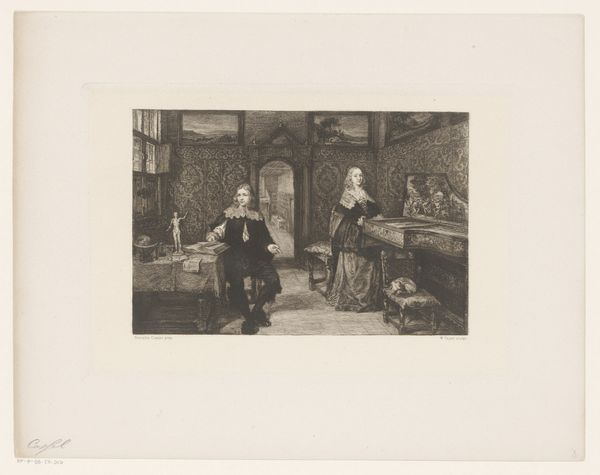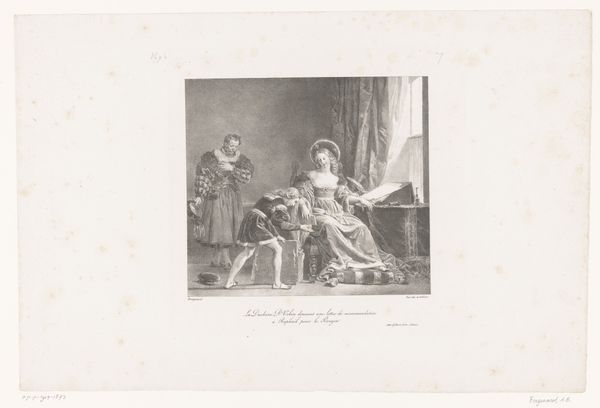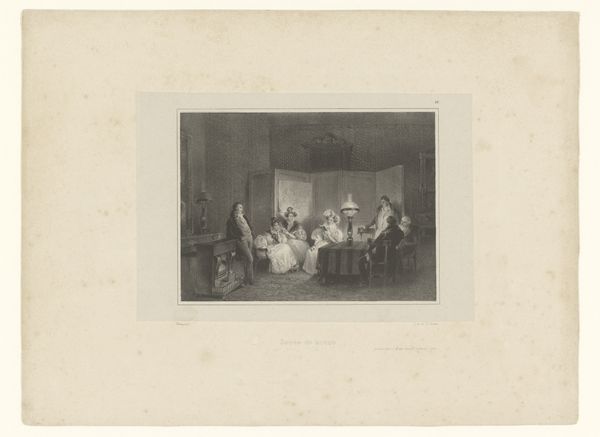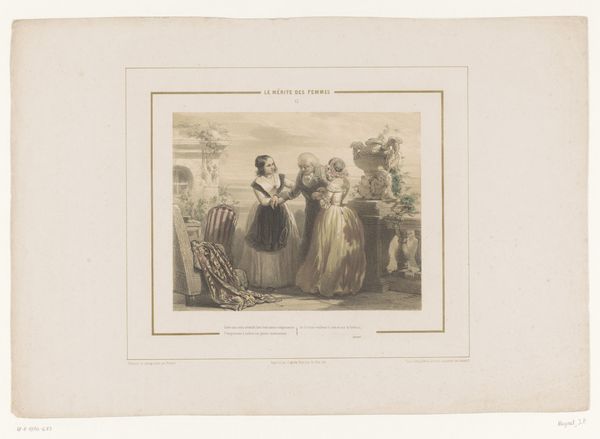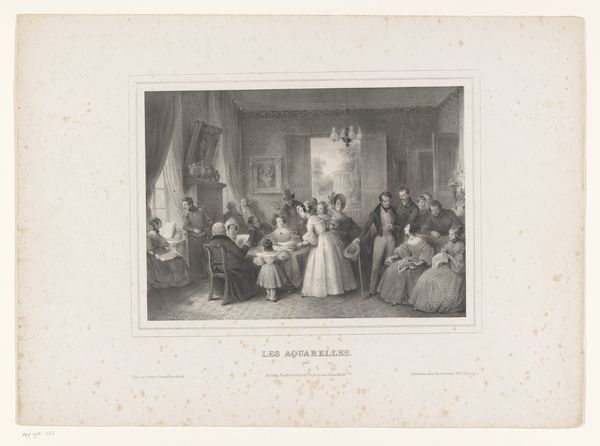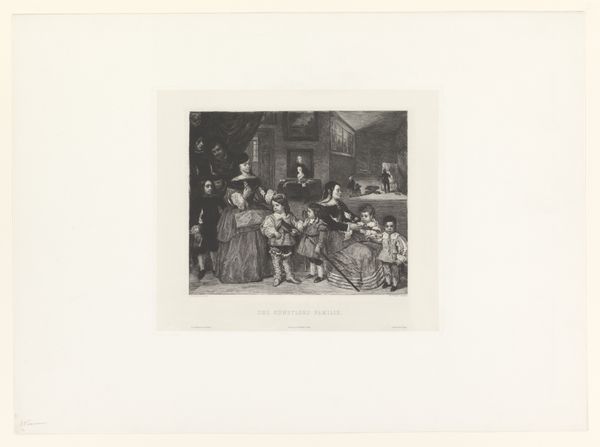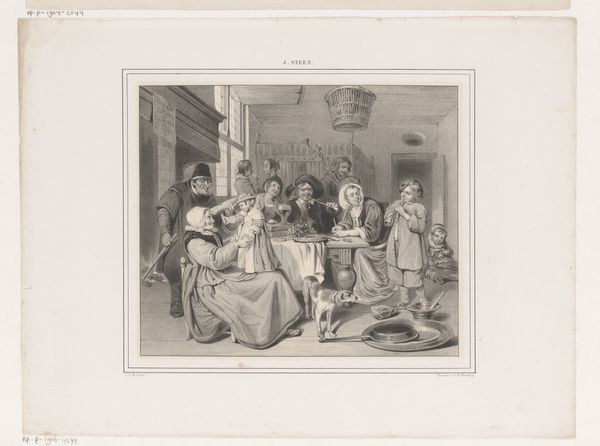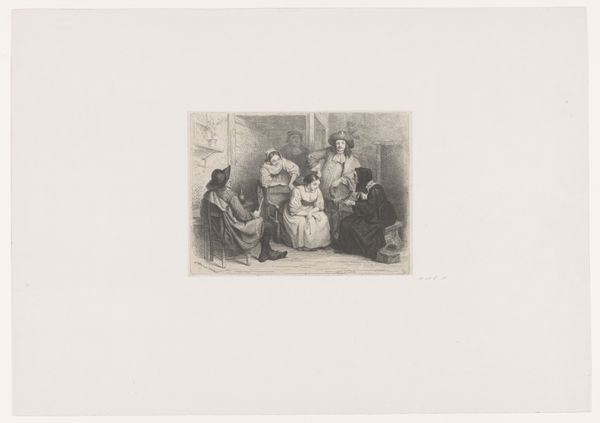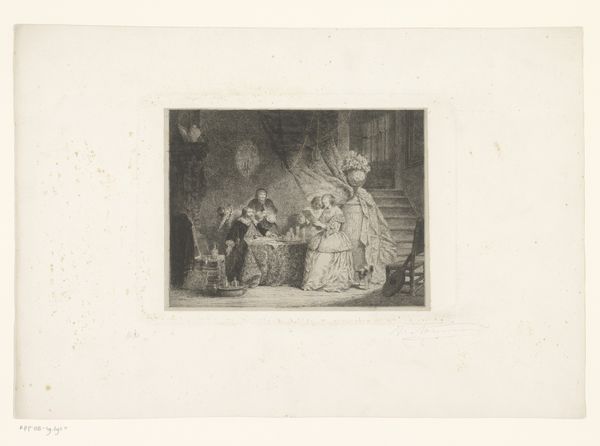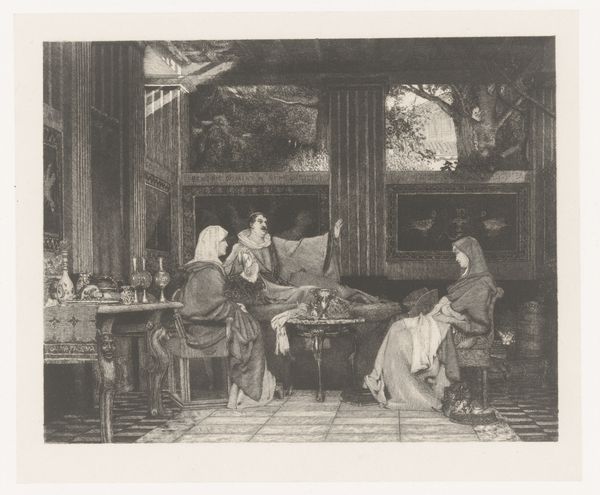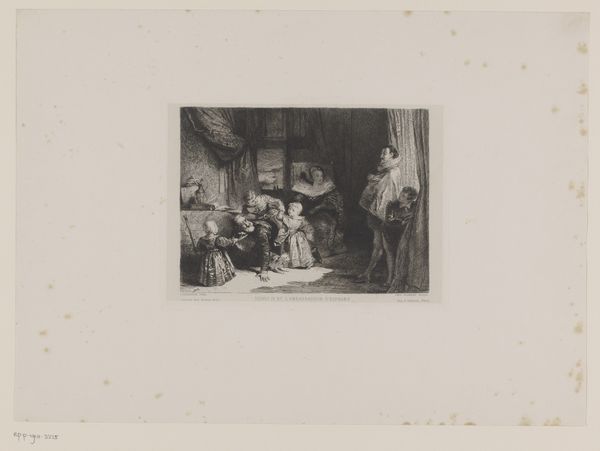
Twee vrouwen luisteren naar het pianospel van een jonge vrouw 1869 - 1872
0:00
0:00
print, engraving
#
portrait
# print
#
genre-painting
#
engraving
#
realism
Dimensions: height 425 mm, width 480 mm
Copyright: Rijks Museum: Open Domain
Curator: Welcome. Before us hangs a piece by Hendrik D. Jzn Sluyter, crafted between 1869 and 1872. It's titled, "Twee vrouwen luisteren naar het pianospel van een jonge vrouw," which translates to "Two women listening to the piano playing of a young woman." The piece is currently housed here at the Rijksmuseum. Editor: It evokes a strong sense of the Victorian era. The textures rendered in this print medium convey an upper middle class existence through quiet contemplation, yet…something seems askew. Curator: Indeed, Sluyter employed an engraving technique for this print, embedding it within the genre painting style while reflecting realism. The artwork depicts a parlor scene, three women are in a richly decorated room, one is playing the piano and the other two are listening by the table. This composition illustrates how leisure time was framed during this period for women. Editor: The quiet performance creates this fascinating tension when considering how this private sphere was also where gender roles were being shaped and reinforced, isn’t it? We see how women's cultivation through artistic pastimes, like playing piano, functioned. They occupy these highly stylized gendered performances within the space of bourgeois interior. Curator: The engraving emphasizes the status these objects confer and simultaneously underscores the domesticity expected. The detail of the candlelight, the patterned wall hangings, the fashionable garments each contribute to its display of refinement. These visuals contribute to understanding societal norms of the time. Editor: Absolutely. Even the seemingly simple act of gathering around music becomes charged. Is this social progress or a gilded cage? Or perhaps, it's both. I find myself thinking of the ways similar forms of social pressures still operate. Curator: Examining Sluyter’s piece critically through this lens, invites us to investigate societal power dynamics encoded in art. The image prompts introspection on themes relevant even to contemporary discussions of female representation and agency. Editor: Precisely. Art like this urges us to acknowledge its place in history. The representation, though from another time, mirrors similar echoes in present cultural contexts about gender and expectation. It shows us that dialogues on such issues remain perpetually vital. Curator: A fruitful perspective, thank you! It's these rich nuances which underscore why analyzing art through cultural history, matters greatly for understanding public narratives and art's enduring significance. Editor: Thank you. Recognizing such contexts amplifies how this image speaks beyond a simple parlor scene into a critical conversation that evolves through generations.
Comments
No comments
Be the first to comment and join the conversation on the ultimate creative platform.
